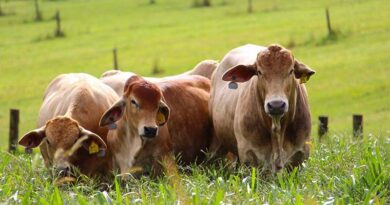3 new varieties from IARI will revolutionise Basmati Paddy in India
19 May 2022, New Delhi: Farmers in India will now be relieved from heavy infestation of bacterial leaf blight and Blast in paddy. Indian Agricultural Research Institute (IARI) has announced the release of three new varieties Pusa Basmati-1847, Pusa Basmati-1885 and Pusa Basmati-1886 which are resistant to bacterial leaf blight and blast disease.
The new released varieties are improveised from the prevalent varieties viz. Pusa Basmati-1121, Pusa Basmati-1509 and Pusa Basmati-1401 and share the same features with improved yield and disease resistance in them. The information was shared by Dr. Ashok Kumar Singh, Director, Indian Agricultural Research Institute (IARI) with Krishak Jagat.
Pusa Basmati-1847 (Bacterial leaf blight and Blast resistant)
Dr. A.K. Singh informed that Pusa Basmati-1847 has ben developed by improving Pusa Basmati-1509. Maturity of this new developed variety is 125 days and other features are same as of Pusa Basmati-1509. This new developed variety gives 5 quintals/acre more yield than Pusa Basmati-1509.
Pusa Basmati-1885 (Bacterial leaf blight and Blast resistant)
Dr. Singh informed that a new variety Pusa Basmati-1885 has been developed by the institute by improving the earlier developed and popular paddy variety Pusa Basmati-1121 and making it disease resistant. Its maturity is 145 days. The length and spread of paddy after maturity is also similar to the previous 1121 variety. The variety is resistant to both bacterial leaf blight and blast.
Pusa Basmati-1886 (Bacterial leaf blight and Blast resistant)
Pusa Basmati-1886 has been developed by making Pusa Basmati 1401 resistant to bacterial leaf blight and blast and is of good quality and matures in 155 days. It is also a preferred quality paddy for export to the European Union.
Dr. Singh said that for the prevention of bacterial blight disease and blast disease, farmer had to use numerous rounds of fungicides and antibiotics due to which chemical residues crossed maximum residue limit (MRL) in paddy as per EU norms.
India exported 5 lakh tonnes of basmati paddy in 2017 to the European Union which was reduced to 2.5 lakh tonnes in 2019 due to high residue content. The new released varieties by IARI will help farmers to reduce the use of agrochemicals for disease and infestation control with improved yields.
Bakanae disease of Paddy
Giving interesting information about Bakanae disease in paddy, Dr. Singh said that ‘Bakanae’ is a Japanese word which means ‘fool’ or ‘Foolish’. In this disease, paddy plants become tall, dry, pale yellow and the field looks bad. The plants look separated from the healthy plants and it is easy to identify diseased plants from the top.
This disease can be both seed and soil borne. The most important step to avoid this is seed treatment. Farmer can use Trichoderma for seed treatment to prevent this disease.
Also Read: IIT roorkee and garuda aerospace partner for drone training across india












